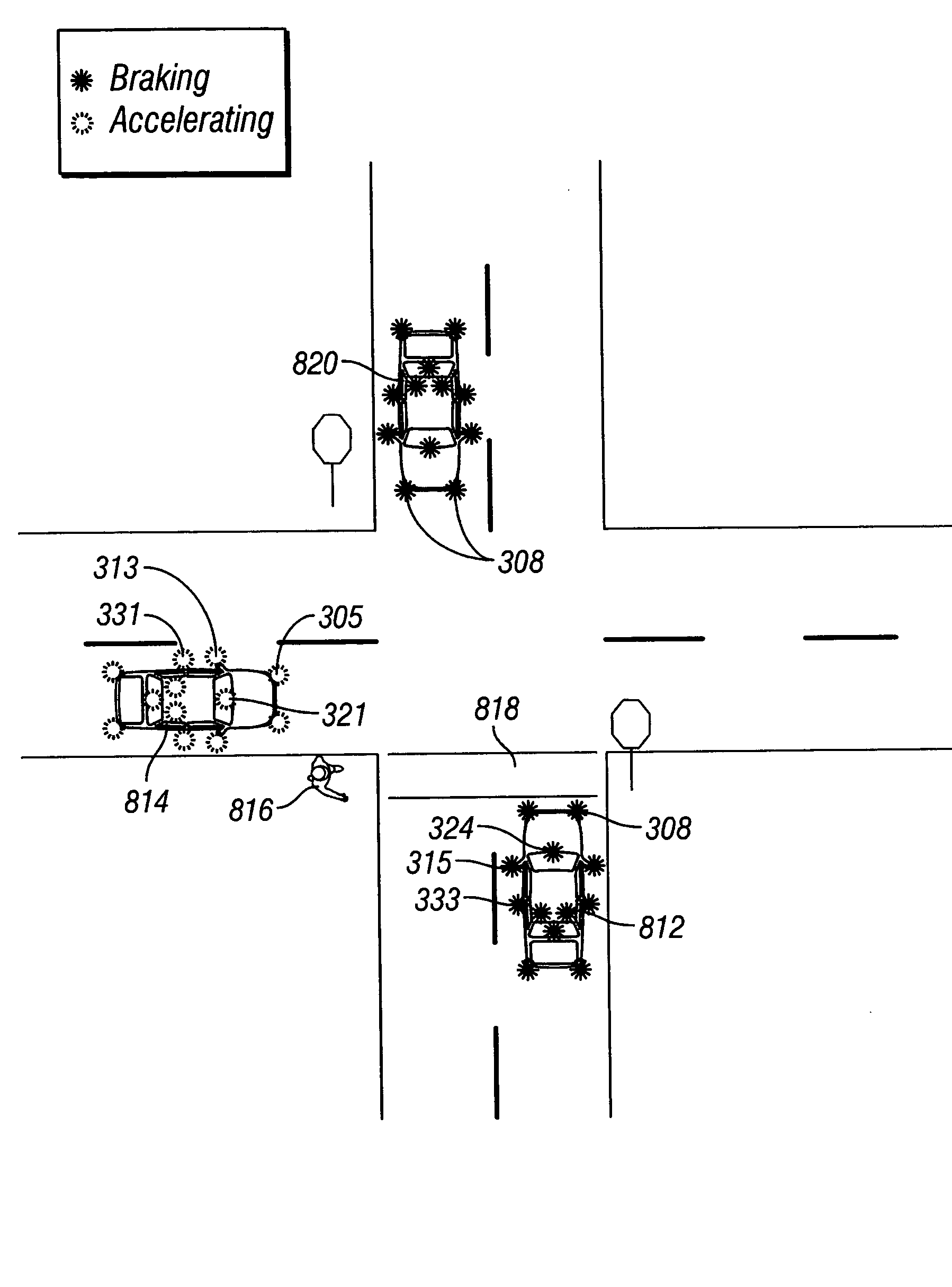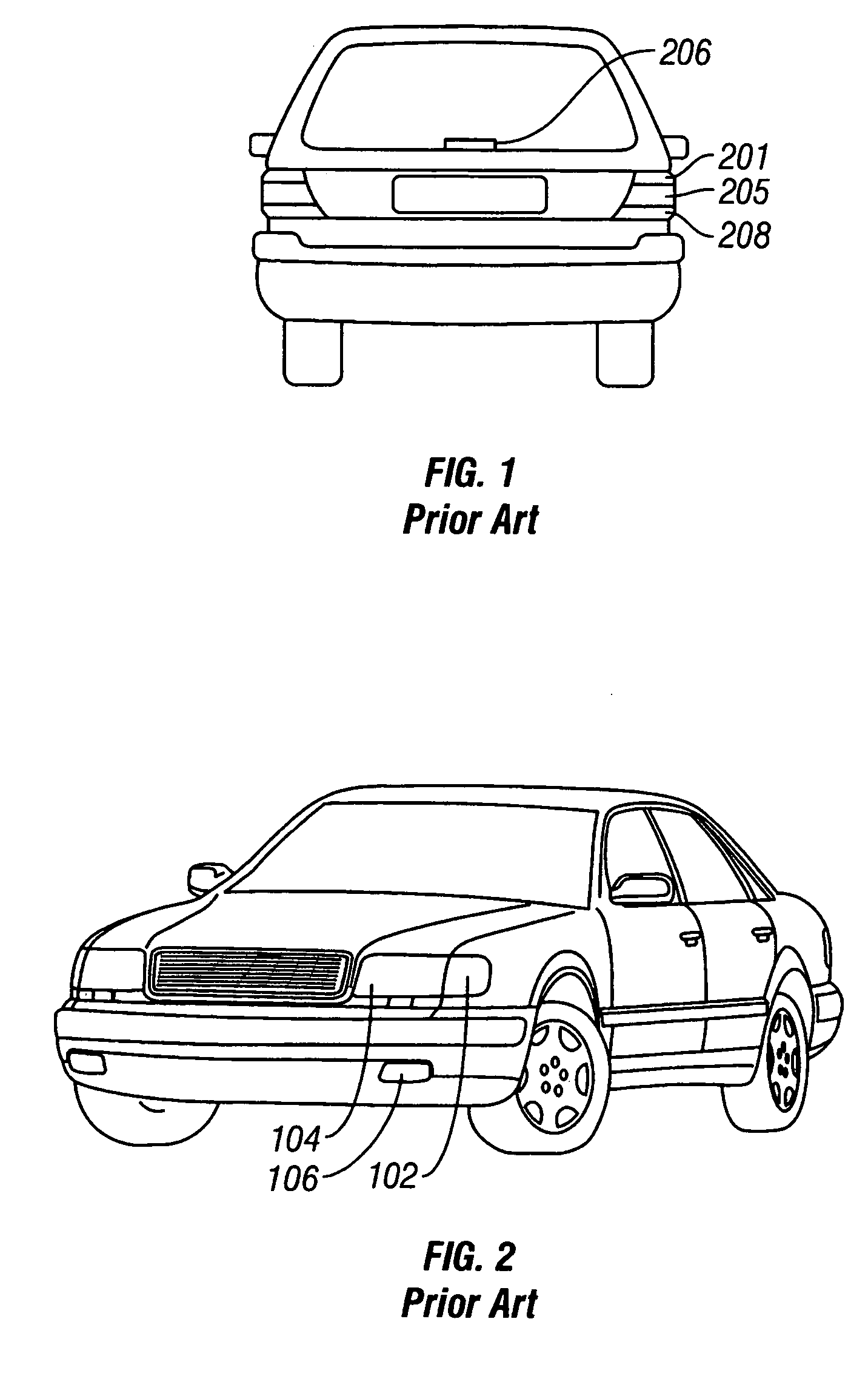Method for a changing safety signaling system
a safety signaling and signaling system technology, applied in the direction of signalling/lighting devices, vehicle components, optical signalling, etc., can solve the problems of substantial risks associated with driving automobiles and other vehicles at relatively high speed under hazardous weather conditions, limited light on the front of a vehicle, etc., to increase or decrease the flashing rate, increase or decrease the effect of the flashing ra
- Summary
- Abstract
- Description
- Claims
- Application Information
AI Technical Summary
Benefits of technology
Problems solved by technology
Method used
Image
Examples
Embodiment Construction
[0189] While the invention is described below with respect to one or more preferred embodiments, other embodiments are possible. The concepts disclosed herein apply equally to other systems for externally indicating acceleration, deceleration and braking of an automobile or other vehicle through detecting the use of a vehicle's brakes and accelerator. Further, in one aspect, the invention is directed towards improved turn indicators. The instant invention can be used with any vehicle that can use a signaling system including, but not limited to any motor vehicle, automobile, mass transportation vehicle, truck, tractor trailer, bus, school bus, commercial vehicle, commercial equipment, industrial equipment, military vehicle, snowmobile, watercraft including jet skis and boats, submarines, and ships, scooter, motorcycle, minibike, bicycle, go-cart, moped, unmanned vehicle, toy car, toy ship, or toy aircraft and aircraft. The instant invention can be used with any vehicle that can use ...
PUM
 Login to View More
Login to View More Abstract
Description
Claims
Application Information
 Login to View More
Login to View More - R&D
- Intellectual Property
- Life Sciences
- Materials
- Tech Scout
- Unparalleled Data Quality
- Higher Quality Content
- 60% Fewer Hallucinations
Browse by: Latest US Patents, China's latest patents, Technical Efficacy Thesaurus, Application Domain, Technology Topic, Popular Technical Reports.
© 2025 PatSnap. All rights reserved.Legal|Privacy policy|Modern Slavery Act Transparency Statement|Sitemap|About US| Contact US: help@patsnap.com



